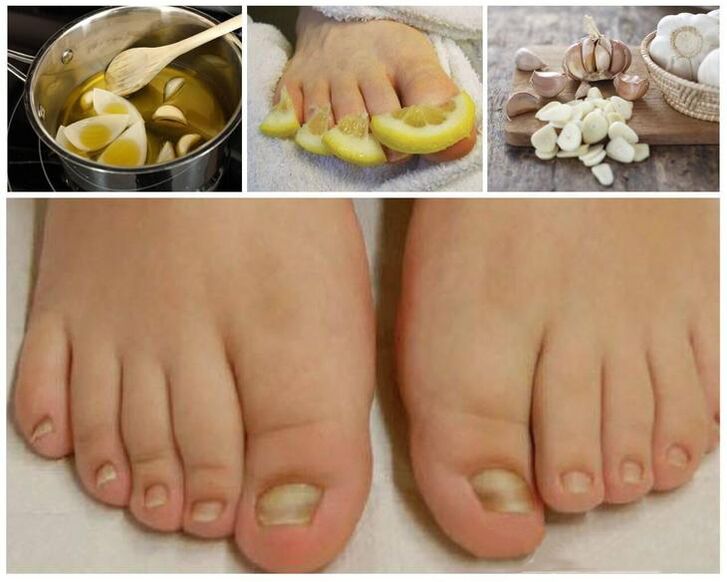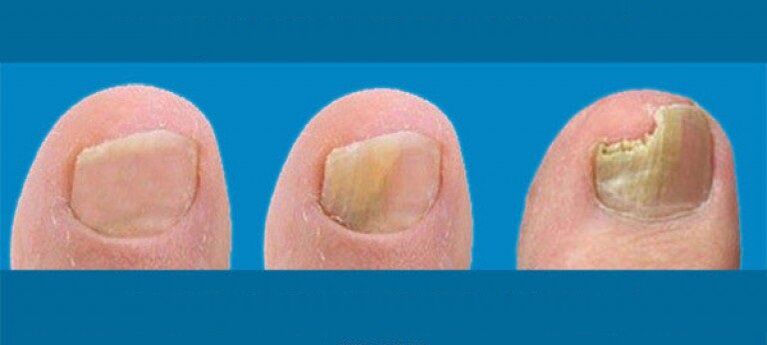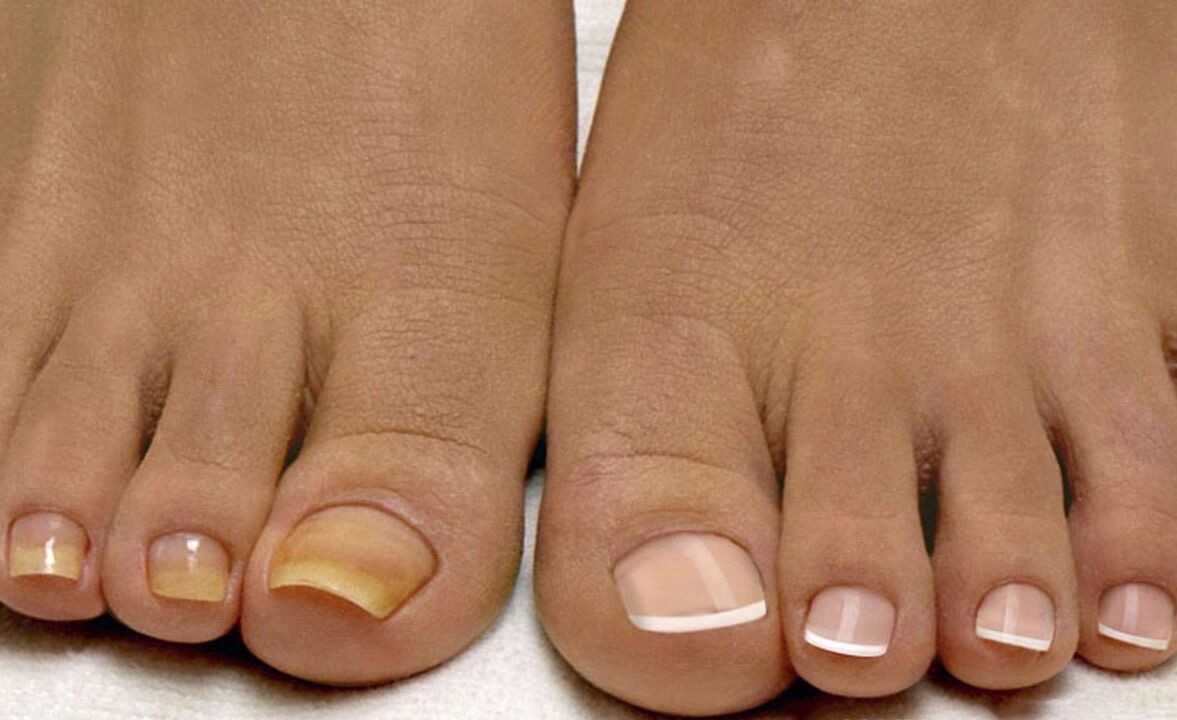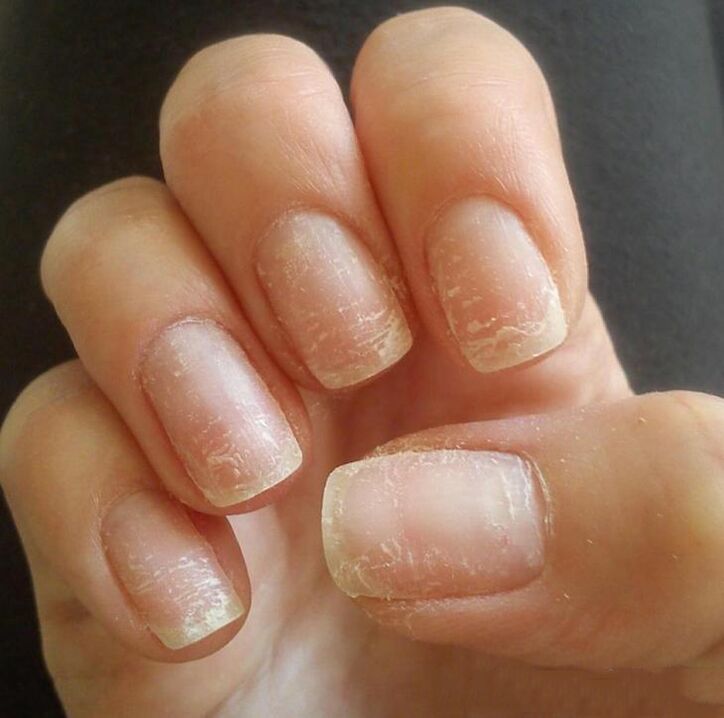
Fungal infections can affect any part of the body.Fungus, like bacteria and other microorganisms, is always present in the human body and its skin with a strict balance.When the number of mushrooms for a variety of reasons increases, the infection may begin.
Onychomycosis, also known as onichia fungus, is a fungal infection that affects the nails either on the feet or in the hands.It develops slowly, so it's very difficult to see any signs of the disease at first.
Why does it grow?
Nail fungal infections begin from the time when the number of fungus inside, below or on the nails increases significantly.Fungus loves a warm and humid environment, so during the appropriate environment, they begin to multiply.Nail fungus is caused by the same fungus that causes eczema border, mycosis and lichen cutting.
Mushrooms, quietly live and in the true body -however, can cause nail infections.If you come in contact with someone who has this disease, it can be sent to you.According to the American Academy of Dermatology, fungal infections often affect the feet in the feet than on the arms, as the fingers are more frequent in a warm and humid environment.
If you are used to make a manicure and pedicure in the cabin, then he should find out how the staff eradicate the tool and how often he does.Parting for manicures and pedicures, such as nail files and nippers, can be a source of infection, in any case, without proper disinfection, will be sent to others.
Who can be infected?
There are many causes of nail fungal infections, and each is treated in its own way.Most of these reasons are naturally prevented, but there are several factors that increase the risk of this infection.The highest risk to develop nail fungus is the person:
- They have diabetes;
- has a disease that weakens blood circulation;
- More than 65 years old;
- have overhead nails;
- Visit public baths, swimming pools;
- have a nail injury;
- injury to the skin around the nails;
- Feet are always in moisture or always sweating;
- has a weak immune system;
- They wear narrow and narrow shoes such as tennis and shoes.
Fungal infections are more common in men than women, and more often in people older than children.If someone is sick in your family with fungus, then most likely, you will have it in the future.Older people have the highest risk of developing this infection, as blood circulation increases with age, and the nails grow slower and become thicker.
Like what nail fungus?
Fungal infections can affect some nails, entire nails or some nails at once.
A visible sign

The obvious symptoms of nail fungus are:
- Nail stratification, called purebal hyperkeratosis;
- White or yellow stripes on nails, called lateral onychomycosis;
- collapse of nails or angles, called distal onychomycosis;
- Excess white spots on the nails, after which holes are permanent;
- appearance of spots -yellow spots near nail holes, called proximal onychomycosis;
- Loss of nails.
General sign
General symptoms of fungal infection are considered:
- deformation of the nail plate, the nails are not well held in place;
- unpleasant odor of infected nails;
- nails collapsed or thickened.
How to find out if I have nail fungus?
The only way to confirm the diagnosis is to consult a doctor, as some other infections can also affect the nails and have symptoms similar to fungus.In such cases, nail polish is usually taken, which is sent to the laboratory for detailed analysis and diagnosis explanation.
When is time to see a doctor?

In most cases, nail fungus is considered a cosmetic problem alone.However, in some people, fungal infections can cause serious complications.Therefore, in people with diabetes, nail fungus can lead to foot ulcers or other problems with the feet.According to a 2012 study, chronic nail fungus in the legs is considered one of the major risk factors and the main conditions for the development of bacterial cellulite.
Therefore, if you have a weak diabetes or immune system, you cannot use home remedies for nail fungus treatment.Contact your doctor for help to find out how to treat fungus on the feet and how to treat it.
How to cure nail fungus on your feet?
Overcomplex medicines are usually not recommended for the treatment of fungal nail infections, as they do not provide reliable results.Instead, your doctor prescribes oral antifungal drugs.These medicines are very effective, but have many side effects of stomach disorders and dizziness to skin and jaundice problems.
You can use other antifungal agents, such as antifungal varnish or nail base.It is used for nails in the same way as normal nails.Depending on the type of fungus, as well as the degree of damage to the nail plate, this tool may need to be used for several months.
Unfortunately, the treatment does not guarantee complete removal of fungal infections.In almost half the cases, the nail fungus is back.Complications are not excluded.Therefore, many people are more likely to use traditional medical help.
People's recovery for fungus
The fungus on the toenails is not at all you want to see on your feet, especially in the summer during the beach season.Therefore, we decided to collect 10 of the most popular and effective traditional remedies to learn how to treat nail fungus on the feet.
Highlander snake extract

Snake highlander extract is a natural antifungal agent.Highlander snake refers to the family plants of the sun.A study conducted in 2008 shows that extracts are also effective in nail fungus on the feet, as a cyclopyrox drug prescribed by prescription.To get rid of fungal infections in this method, you need to adhere to the following schemes: in the first month of treatment, apply extracts to affected areas every third, in the second month twice a week and in the third month 1 time a week.
Tea tree oil
Tea tree oil, also known as Melalea like, is an essential oil that has antifungal and antiseptic effects.It is also recommended for the treatment of nail fungus.You just need to apply tea tree oil directly to the nails twice a day with a cotton swab.
Ordinary oregano oil
Regular oil contains thymol.Timol has antifungal and antibacterial effects.To treat fungus on the toenails, use oil twice daily with cotton swabs.Some people use regular oregano oils along with tea tree oil.Both products have a strong effect and can cause irritation and allergic reactions, so it is not recommended to combine this oil.
Olive sheet extract
It is believed that the active ingredient in olive sheet extracts, oleuroperoin has antifungal, antimicrobial and immunomodulation effects.You can apply olive sheet extract directly to nail or drinks in capsule form.Although treatment with capsules is considered more effective than using olive oil extract.Take 1-3 capsules with food 2 times a day.During the treatment, drink plenty of fluids.
Ozone oil

Ozone oils, such as olives and sunflower, are obtained with saturated with gas ozone.According to a 2011 study, the effects of ozone in low concentrations for a short period of time can kill many microorganisms, such as mushrooms, yeast and bacteria.In another study, it was found that ozone sunflower oil was more effective in the treatment of nail fungal infections in the foot than ketoconazole antifungal drugs sold according to prescription.
To treat fungus on the toenails with ozone oil, treat nails twice daily.
Vinegar
There is no scientific evidence that vinegar helps in the treatment of fungus.However, this is a pretty safe home remedy you can try.To do this, make a bath with warm feet for the feet with vinegar, dilute 1 part vinegar in 2 parts water.This procedure should be performed daily for 20 minutes.
Freshener for the oral cavity
The contemporary composition includes bulbs, thymols and eucalyptus, which have antibacterial and antifungal properties.Maybe that's why it's so popular among people in the treatment of nail fungus on the feet.All you have to do is hold the problem in the basin with a refresh for 30 minutes.This procedure is performed daily.
Garlic

As you know, garlic has antifungal and antimicrobial effects.To get rid of fungal infections, apply chopped garlic cloves to the problem for 30 minutes daily.If you don't like the smell, you can try the garlic capsule.Take tightly according to the instructions.
Make adjustments on a diet
Our health depends on what you eat.The more useful the food you eat, the more likely your body will overcome a variety of factors and diseases, including nail fungus.
Eat the food needed for the body to function normal, namely:
- Yogurt is enriched with probiotics;
- Enough protein for normal nail growth;
- Enough iron to prevent nail polish;
- food, rich in fatty acids;
- Foods are rich in calcium and vitamin D (low dairy products).
In this case, home remedies may be more effective than medicines released according to prescriptions in the treatment of mild and moderate levels in the course of the disease.Obviously, traditional medicine methods have less side effects, but their effectiveness has not been scientifically proven.Many factors need to be taken into account in the treatment of nail fungal infections, such as nail permeability, seriousness of the disease and general health conditions.

Treatment with the help of traditional medicine usually lasts longer than treatment with medicines.The first results may appear only after a few months.It often happens that the problem is back.
How to prevent fungal nail infection
Only a few simple changes in lifestyle will protect you from this serious and annoying infection.Take care of your nails, cut them on time and make sure they are clean.Try again not to hurt the skin around your nails.If your hands often come in contact with water, place rubber gloves.
Here are some tips on how to protect yourself from fungus:
- Use antifungal spray and powder regularly;
- Wash your hands after contact with infected nails;
- Wipe your feet dry after bathing, especially in areas between the fingers;
- make manicures and pedicures in proven salons;
- Just use your tools for manicures and pedicures;
- Wear socks for this season to prevent the spread of the skin;
- Do not go barefoot in public places;
- Reject artificial nails and paint your nails with varnish.
What is expected in the future?
Don't expect immediate results.In some people, treatment may not be able to help immediately and some courses or replacement of the drug will be needed.Fungal infections are considered cured only if new nails have developed without any signs of fungus.But this does not guarantee that fungal infections will not return.In more advanced cases, nails are subject to persistent infections with fungus, and they need to be removed.
The main complications of fungal infections are:
- Reinfection;
- the removal of infected nails, both and forever;
- Nail polish affected by fungus;
- the spread of infection to other parts of the body and even in the bloodstream;
- The development of bacterial skin infections, called cellulite.
You should consult your doctor under any circumstances, especially if you have diabetes fungus and nails on your feet.People with diabetes expose themselves to the risk of developing serious complications, so don't waste time and make an appointment with a doctor.

















